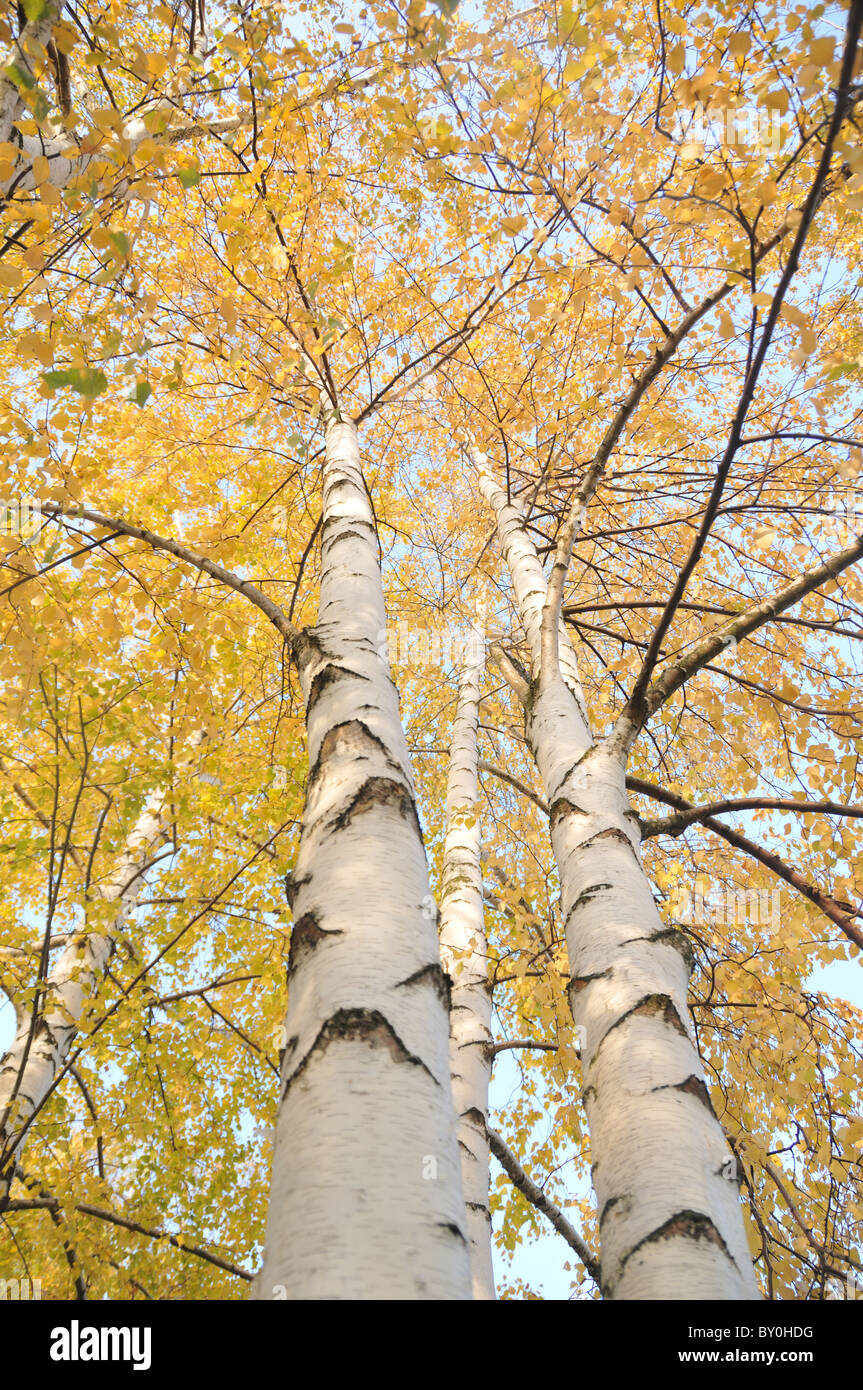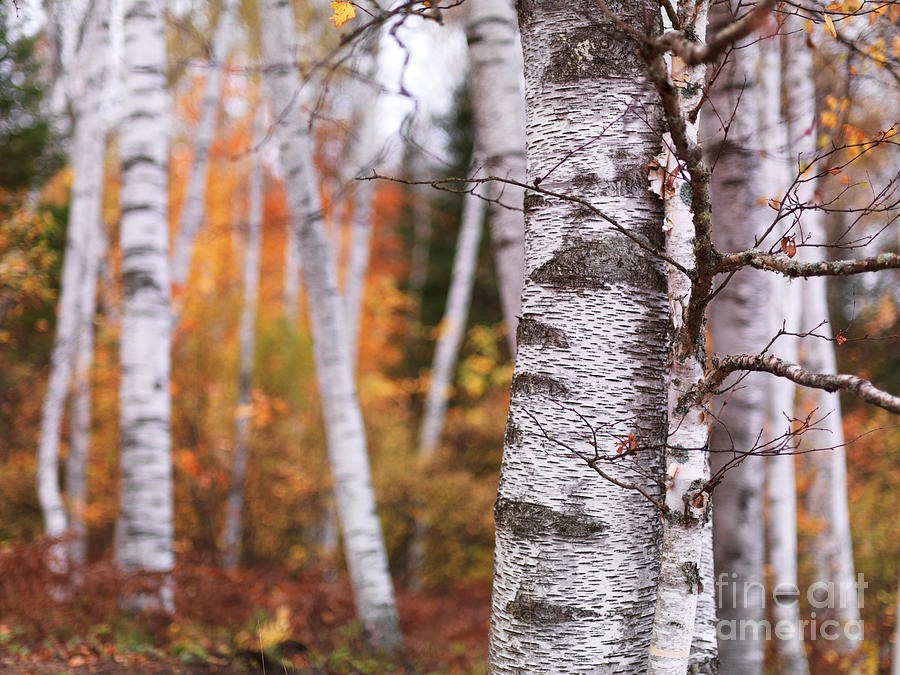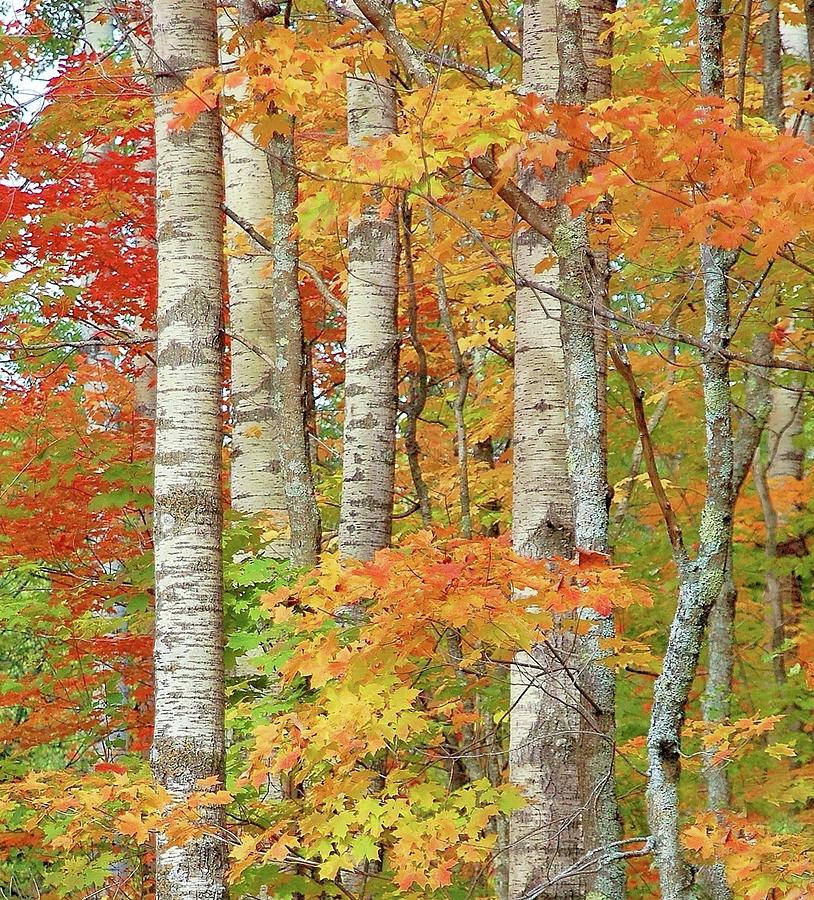Why Birch Trees Shine in the Fall Season
Birch trees are one of the most recognizable and beloved trees in the fall season, and for good reason. Their striking white bark and vibrant yellow foliage make them a stunning addition to any landscape. But what sets birch trees apart from other trees during this time of year? One reason is their unique ability to retain their leaves longer than other deciduous trees, creating a beautiful golden glow that can last well into the fall season. This is due in part to the tree’s ability to slow down its food-making process, allowing it to conserve energy and resources during the colder months.
In addition to their striking appearance, birch trees also play an important role in the ecosystem during the fall season. They provide a vital source of food and shelter for a variety of wildlife, including birds, squirrels, and deer. The trees’ leaves and branches also help to filter the air and soil, improving the overall health and quality of the environment.
Another reason birch trees shine in the fall season is their rich cultural and historical significance. In many cultures, birch trees are seen as a symbol of renewal and rebirth, and are often associated with the changing of the seasons. In some parts of Europe, for example, birch trees are traditionally decorated with ribbons and other ornaments during the fall season, as a way of celebrating the harvest and the coming of winter.
Overall, birch trees are a true marvel of nature, and their beauty and significance during the fall season are undeniable. Whether you’re a nature lover, a photographer, or simply someone who appreciates the beauty of the world around you, birch trees are definitely worth taking notice of during this time of year.
How to Care for Your Birch Tree in the Fall
As the fall season approaches, it’s essential to provide your birch tree with the necessary care to ensure its health and longevity. Proper care during this time of year can help your tree thrive and maintain its stunning appearance. Here are some tips and advice on how to care for your birch tree in the fall:
Pruning is a crucial aspect of birch tree care in the fall. Remove any dead or damaged branches to prevent the spread of disease and encourage healthy growth. Use clean, sharp pruning tools to avoid spreading bacteria and other pathogens. Make clean cuts just above a growth node, and remove any weak or spindly branches.
Watering is also essential for birch trees in the fall. Although the weather may be cooler, the tree still needs adequate moisture to survive. Water your birch tree deeply once or twice a week, depending on weather conditions. Avoid overwatering, which can lead to root rot and other problems.
Fertilizing is another important aspect of birch tree care in the fall. Apply a balanced, slow-release fertilizer to the soil around your tree, following the manufacturer’s instructions. This will provide your tree with the necessary nutrients to thrive during the coming year.
In addition to pruning, watering, and fertilizing, there are several other things you can do to care for your birch tree in the fall. Mulching around the base of the tree can help retain moisture and suppress weeds. You can also apply a layer of compost or well-rotted manure to the soil to provide additional nutrients.
By following these tips and advice, you can help your birch tree thrive in the fall and maintain its stunning appearance. Remember to always follow proper care techniques and avoid overwatering or overfertilizing, which can harm your tree. With proper care, your birch tree can provide beauty and enjoyment for years to come.
It’s also important to note that birch trees in the fall are more susceptible to pests and diseases. Keep an eye out for signs of infestation or infection, and take action promptly if you notice any problems. Regular inspections and maintenance can help prevent issues and ensure your tree remains healthy and thriving.
The Science Behind Birch Trees’ Fall Colors
The fall season is a time of great change for birch trees, as they transform from a lush green to a vibrant yellow, orange, or red. But what causes this change in color? The answer lies in the science behind the trees’ biology.
During the spring and summer months, birch trees produce chlorophyll, a green pigment that helps them absorb sunlight and produce energy through photosynthesis. However, as the days shorten and the weather cools in the fall, the trees begin to slow down their food-making process and prepare for the winter months.
As the trees stop producing chlorophyll, the hidden pigments of carotenoids and anthocyanins become visible, causing the leaves to change color. Carotenoids are responsible for the yellow, orange, and brown colors of the leaves, while anthocyanins produce the red and purple colors.
The combination and concentration of these pigments determine the final color of the leaves. For example, birch trees with high levels of carotenoids may turn a bright yellow, while those with more anthocyanins may turn a deep red.
The process of changing color is not just a simple matter of the trees “turning off” their chlorophyll production. Rather, it is a complex process that involves a series of biochemical reactions and changes in the trees’ cellular structure.
For example, the trees’ cells must break down the chlorophyll and other pigments, and then reorganize their cellular structure to allow the hidden pigments to become visible. This process is triggered by the shortening days and cooler temperatures of the fall season.
Understanding the science behind the changing colors of birch trees in the fall can help us appreciate the beauty and complexity of these trees. Whether you’re a nature lover, a scientist, or simply someone who enjoys the beauty of the fall season, the changing colors of birch trees are a true marvel of nature.
In addition to their beauty, the changing colors of birch trees also play an important role in the ecosystem. The trees’ leaves provide food and shelter for a variety of animals, and their changing colors can serve as a signal for the start of the winter months.
Photographing Birch Trees in the Fall: Tips and Tricks
Capturing the beauty of birch trees in the fall can be a challenging but rewarding experience for photographers. With their striking white bark and vibrant yellow foliage, birch trees make a stunning subject for photography. Here are some tips and tricks to help you capture stunning photographs of birch trees during the fall season:
Lighting is one of the most critical factors in photography, and when it comes to capturing birch trees in the fall, the golden hour is the best time to shoot. The soft, warm light of the golden hour brings out the vibrant colors of the leaves and adds a sense of depth and dimension to the image.
Composition is also essential when photographing birch trees. Look for interesting angles and perspectives, such as shooting from a low or high angle, or using a wide-angle lens to capture the tree’s surroundings. Consider incorporating other elements into the scene, such as a lake, river, or mountain range, to add depth and context to the image.
Camera settings are also crucial when photographing birch trees. A low ISO and a small aperture will help to ensure a sharp image with a large depth of field. Consider using a tripod to stabilize the camera and avoid camera shake.
In addition to technical considerations, it’s also important to consider the artistic aspects of photography. Look for interesting patterns and textures, such as the intricate patterns of the tree’s bark or the vibrant colors of the leaves. Consider experimenting with different techniques, such as intentional camera movement or multiple exposures, to add a creative twist to the image.
Finally, don’t be afraid to experiment and try new things. Photography is all about creativity and experimentation, and the best images often come from trying new techniques and approaches. So don’t be afraid to take risks and try new things – you never know what amazing images you might capture.
We’d love to see your photos of birch trees in the fall Share your images with us on social media using the hashtag #birchtreesinthefall, and we’ll feature some of our favorites on our page.
Landscaping with Birch Trees in the Fall: Design Ideas
Birch trees are a popular choice for landscaping in the fall, and for good reason. Their striking white bark and vibrant yellow foliage make them a stunning addition to any garden or yard. Here are some beautiful landscaping design ideas that feature birch trees as the centerpiece:
Modern Minimalism: Create a sleek and modern look by pairing birch trees with clean-lined hardscaping and minimal ornamentation. This design is perfect for those who want to emphasize the natural beauty of the trees.
Rustic Charm: Bring a touch of rustic charm to your garden by pairing birch trees with natural stone, wood accents, and plenty of greenery. This design is perfect for those who want to create a cozy and inviting atmosphere.
Autumnal Oasis: Create a stunning autumnal oasis by pairing birch trees with vibrant fall flowers, such as asters and chrysanthemums. This design is perfect for those who want to celebrate the beauty of the fall season.
Woodland Whimsy: Bring a touch of whimsy to your garden by pairing birch trees with natural elements, such as moss, ferns, and wildflowers. This design is perfect for those who want to create a magical and enchanting atmosphere.
Formal Elegance: Create a formal and elegant look by pairing birch trees with manicured lawns, ornate fountains, and classical statuary. This design is perfect for those who want to create a sophisticated and refined atmosphere.
These are just a few examples of the many beautiful landscaping design ideas that feature birch trees as the centerpiece. Whether you’re looking to create a modern and sleek look or a rustic and charming atmosphere, birch trees are a versatile and stunning choice for any garden or yard.
In addition to their aesthetic appeal, birch trees also offer a number of practical benefits for landscaping. They are relatively low-maintenance, drought-tolerant, and can thrive in a variety of soil conditions. They also provide a natural source of shade, which can be especially beneficial in the fall when the sun is still strong.
Overall, birch trees are a popular choice for landscaping in the fall, and for good reason. Their stunning beauty, versatility, and practical benefits make them a great choice for any garden or yard.
Birch Trees in Fall Folklore and Tradition
Birch trees have a rich cultural significance in fall folklore and tradition, particularly in European and North American cultures. In many societies, birch trees are associated with harvest festivals, mythology, and symbolism.
In ancient Celtic mythology, the birch tree was considered a symbol of new beginnings and renewal. The Celts believed that the birch tree had the power to purify and protect, and it was often used in rituals and ceremonies to mark the changing of the seasons.
In Scandinavian folklore, the birch tree is associated with the goddess Freyja, who is said to have ridden through the forest on a chariot pulled by cats, scattering birch seeds as she went. The birch tree is also said to have been used in traditional Scandinavian weddings, where it was believed to bring good luck and fertility to the couple.
In North America, the birch tree is often associated with the harvest season, and is commonly used in fall decorations and crafts. The tree’s white bark and yellow leaves make it a popular choice for wreaths, garlands, and other seasonal decorations.
In addition to its cultural significance, the birch tree also has a number of symbolic meanings in fall folklore and tradition. It is often seen as a symbol of hope, renewal, and new beginnings, and is believed to bring good luck and prosperity to those who plant it in their gardens.
Overall, the birch tree is a deeply meaningful and symbolic tree in fall folklore and tradition, and its cultural significance continues to be celebrated and honored to this day. Whether you’re looking to add a touch of autumnal charm to your home, or simply want to learn more about the cultural significance of the birch tree, there’s no denying the importance of this beautiful and iconic tree.
In many parts of the world, birch trees are also associated with traditional fall festivals and celebrations. For example, in Germany, the birch tree is a key part of the traditional Oktoberfest celebrations, where it is used to decorate beer gardens and festival grounds.
In conclusion, the birch tree is a tree with a rich cultural significance in fall folklore and tradition. Its association with harvest festivals, mythology, and symbolism make it a deeply meaningful and symbolic tree, and its cultural significance continues to be celebrated and honored to this day.







